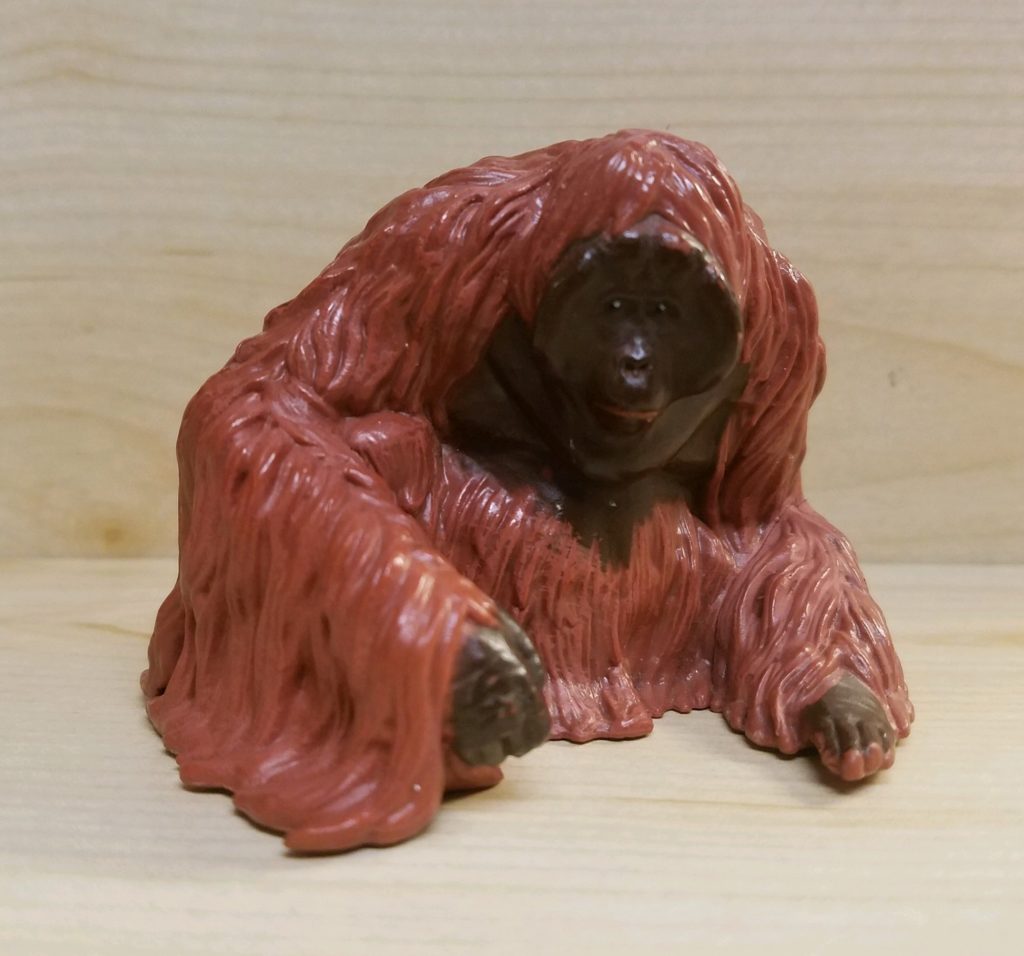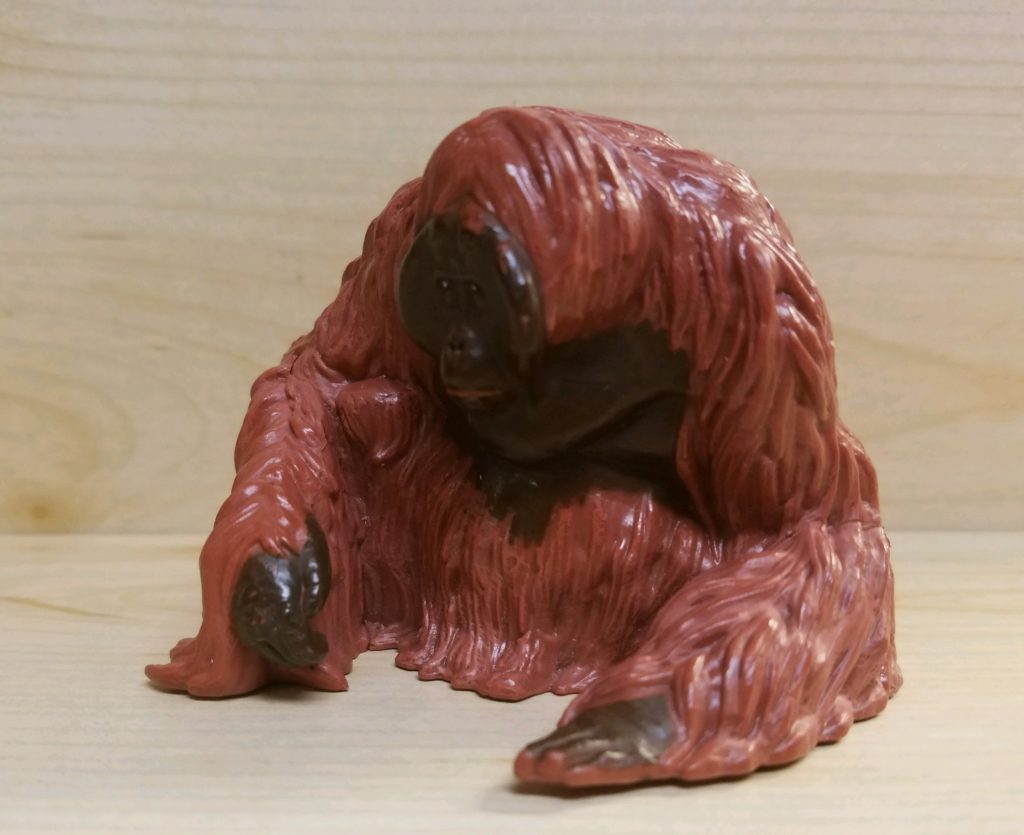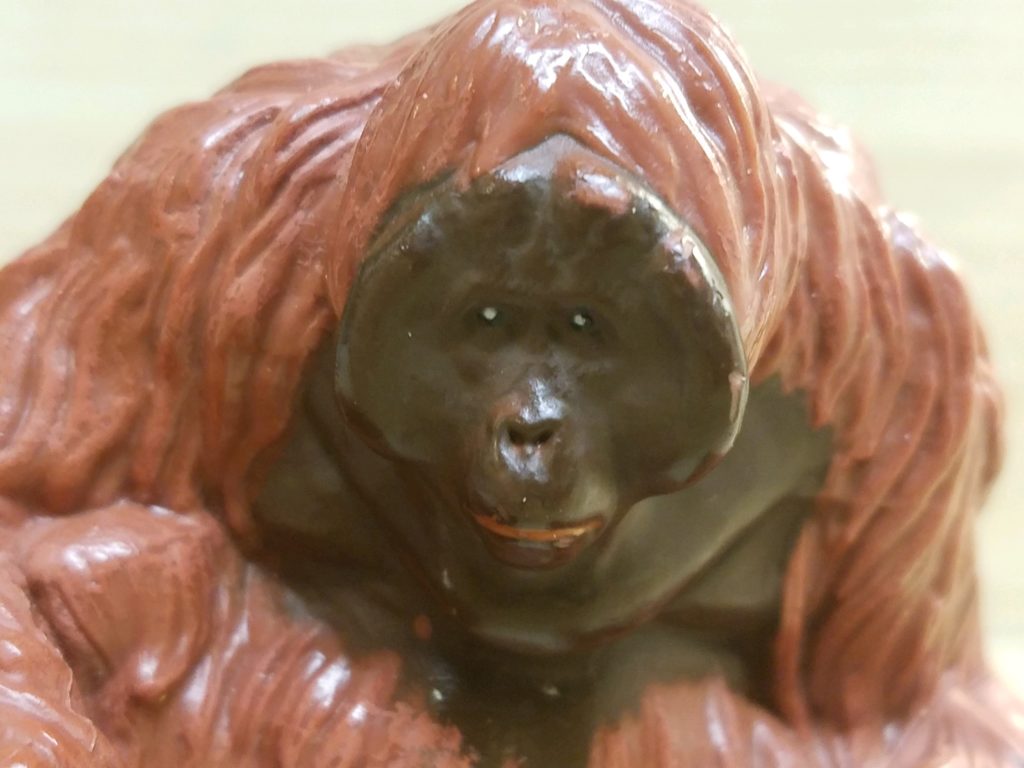Review and images by bmathison1972, edited by Suspsy
In 1967, Disney released a feature-length animated movie of Rudyard Kipling’s Jungle Book series. One of the most iconic characters from that film was the singing and dancing orangutan, King Louie. Interestingly, Louie never appeared in any of Kipling’s original works. And why would he? The characters in Kipling’s stories were animals endemic to India, and orangutans do not live, nor have they ever lived, in India. To remedy this, when the movie was re-made in 2016 as a live-action/CGI film, the character of King Louie was changed from an orangutan to Gigantopithecus, an extinct genus of pongine primate that did live in India. In the film, it was suggested that Louie was the last of his kind, hinting that while Gigantopithecus is considered extinct, there is still one more out there . . .

There are two described species of Gigantopithecus: G. blackii and G. giganteus (=G. bilaspurensis). G. giganteus is known from remains found in India and China, while G. blackii is known from remains found in China and Vietnam. Based on geography, King Louie should represent G. giganteus. However, based on the size of the character in the film, he more closely resembles G. blackii (G. giganteus was roughly the height of a modern human, whereas G. blackii is believed to have stood nearly 3 meters tall).

The figure shown here came in a 5-pack released in 2016 which includes Mowgli (a human), Baloo (a bear), Bagheera (a black leopard), and Shere Khan (a tiger). Luckily I found my figure sold individually on eBay! Normally, I would never collect anthropomorphized characters from fictional works, but the characters from the film were made to look realistic and not cartoon caricatures.

This figure of Gigantopithecus is difficult to measure and calculate scale for, because he is in a sitting position and slightly hunched over. It is made of a solid piece of plastic with no articulation. The maximum dimensions of the figure are 5.0 cm tall, 8.0 cm wide, and 6.5 cm deep. In comparison with the Evolution of Man set by Safari Ltd., this figure scales fairly well as G. blackii (which lived at the same time as Homo erectus). Fossil remains of Gigantopithecus are based primarily on jaw fragments and teeth, and so we do not really know what an actual animal would have looked like. This figure is modeled after an extant orangutan, as they are believed to be the closest living relative to Gigantopithecus. It is covered with a very long, shaggy coat, longer hair than one would see on an extant orangutan. Tooth structure suggests Gigantopithecus was an herbivore.

Gigantopithecus became extinct roughly 100,000 years ago, when it is believed natural climate change resulted in the animal’s habitat transforming from forests into savanna, and thus resulting in the loss of major food sources. Hunting by Homo species may have also contributed to its extinction.

This figure is recommended to those who like to collect different and unusual species. To my knowledge this is the only figure/toy of Gigantopithecus available (not taking into account plush toys). Until a major company produces one (are ya listening, CollectA?), this figure by Just Play is the only option (other than possibly other short-lived figures released specifically for the 2016 film). Apparently, the set this figure was part of was short-lived, and the best chance of getting one is periodically searching eBay (as I did).
Support the Dinosaur Toy Blog by making dino-purchases through these links to Ebay and Amazon. Disclaimer: links to Ebay.com and Amazon.com on the The Dinosaur Toy Blog are often affiliate links, when you make purchases through these links we may make a commission

Fascinating history of how it was renamed.
There is something unnerving about how this figure looks.
I second that sentiment for a CollectA Gigantopithecus.
Unusual choice, but a great review, thank you!